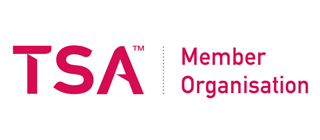HaloCare Group Website Accessibility Guidelines
At HaloCare, we strive to make all our materials as accessible as possible for people of all ages and abilities.
- For our website and digital content, we follow the guidelines of the "Web Accessibility Directive" (Directive (EU) 2016/2102), which came into force on September 23, 2018. The directive requires that these digital services be perceivable, operable, understandable, and robust for all users, including those with disabilities.
- For our mobile and web applications, we also design in line with the European standard EN 301 549, which is based on the Web Content Accessibility Guidelines (WCAG) 2.1.
- For online documents, we utilise the Web Content Accessibility Guidelines (WCAG) developed by the Web Accessibility Initiative (WAI) of the World Wide Web Consortium (W3C).
To ensure our documents meet accessibility standards when designing a new customer-facing document, HaloCare follow the below process:
- WCAG Guidelines: We adhere to the Web Content Accessibility Guidelines, especially if our documents are in digital format.
- Consult NALA Guidelines: We follow the guidelines as laid out in the National Adult Literacy Agency for guidance on creating clear and accessible content including the ‘plain english’ guidelines
- Other Guidelines: Check if there are specific guidelines or standards set by relevant bodies in Ireland, such as the National Disability Authority.
- Accessibility Testing Tools: We use accessibility testing tools to evaluate our documents for compliance with standards such as Microsoft’s accessibility review tool and the adobe accessibility features.
- User Testing: Where appropriate, we involve older individuals, those with a disability or those with a chronic illness in user testing to get real-world feedback on the accessibility of our documents through our Social & Clinical Care Consultant and our Advisory User Group.
- Design: We use specific criteria as laid out in the WCAG (Guideline 1.4.3) for minimum colour contrast ratios to ensure readability for people with visual impairments along with text alternatives, content adaptability, user journey navigation for use with varying assistive technologies and general readability such as font size, line spacing, and paragraph spacing to enhance readability.








